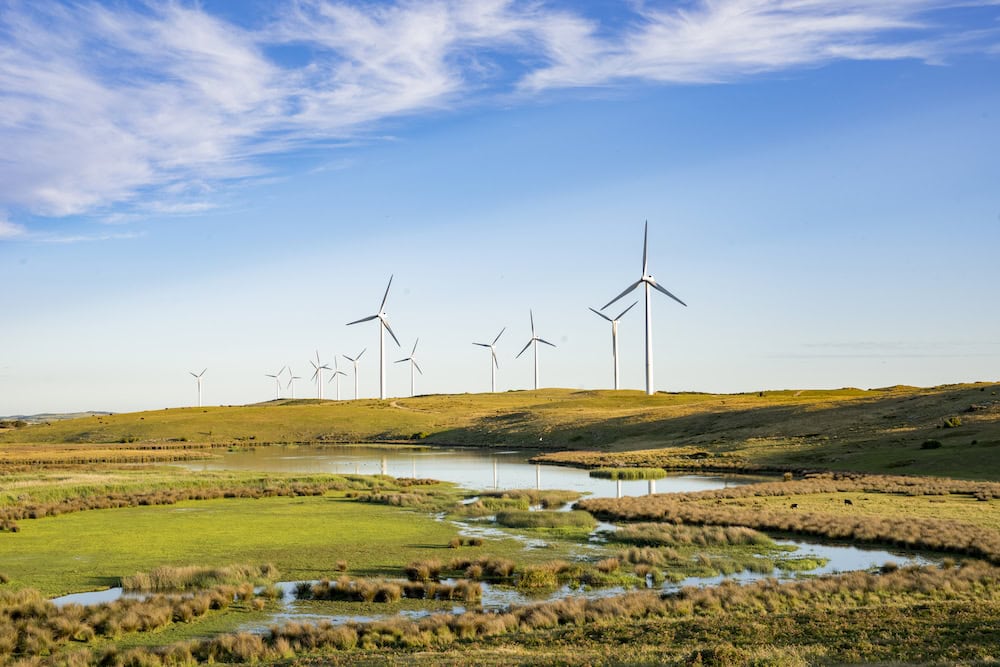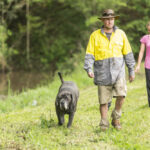Agriculture and regional NSW are at a critical juncture. As the state looks to rebuild…
Pathway to a $30 billion ag sector by 2030

Farmers have identified improving business resilience and environmental performance as key on-farm priorities to help double agricultural output in NSW in the next eight years. Hovering between $12 billion and $15 billion annually, the agriculture sector makes a mammoth contribution to the NSW economy. But NSW Farmers thinks those figures pale in comparison to the sector�s potential, which the Association saying that we can achieve a $30 billion ag sector by 2030.
To help map the 30 by 30 pathway, NSW Farmers has teamed up with the Future Food Systems Cooperative Research Centre and the University of New England to conduct a survey of farmers on the future of farming in NSW. The survey is part of an aptly named Putting Farmers at the Centre joint project that seeks to understand the 30 by 30 goal from the most important perspective � the farmers of NSW.

Survey analysis was ongoing at the time of writing, but early results indicate that farmers see opportunities to support their farm�s resilience and environmental goals.�
These include improving freight and logistics infrastructure, increasing access to domestic and international trade, improving internet connectivity and development of regional processing hubs and value-adding enterprises.
While world leaders were touting net zero targets at COP26 in Glasgow, farmers were also thinking about carbon farming opportunities as another means to support the growth of agriculture.
NSW Farmers CEO Pete Arkle says �30 by 30� is an ambitious but important aspiration as we enter an age of targets and ideals.��Goals such as net zero emissions are deservedly in the spotlight, but in the mounting discourse and hype, there�s another global imperative we cannot forget about: food security,� Pete says.�
The �30 by 30� aspiration is therefore not just economic. Pete says it is about fostering the sustainable growth of one of Australia�s most important sectors; and about committing to the provision of quality food and fibre as the global population bulges to a projected 8.5 billion by the decade�s end.
Professor Derek Baker, the project leader at the University of New England, noted the relationship between farm goals, opportunities for growth, and actions farmers are already taking in their business to meet their goals.

�As well as areas of ongoing development such as workforce training, trade opportunities and freight and logistics infrastructure, farmers are increasingly aware of challenges and opportunities in digital connectivity, regional value-adding, and meeting the demands of climate change,� Derek says.
The next stage of 30 by 30 input from farmers for the Putting Farmers at the Centre project will come from focus groups.
�We�ll need farmers to join in small focus groups across NSW for a structured review of the survey findings to gather ideas to drive the 30 by 30 goal and increase the rate of adoption of Future Food Systems CRC program outputs,� Derek says.
Several farmer focus group sessions will be held in February and March 2022.
Value-adding our way to 30 by 30
The Future of Farming survey results show a clear recognition of the opportunities lying in local processing and value-adding.
Farmers see a range of benefits from value-adding, minimising waste to maximising business profit, and the retention of value from food and fibre as part production in regional communities.
In a report authored by the Australian Farm Institute (AFI) and commissioned by NSW Farmers, regionally based processing is identified as part of the pathway to a stronger agriuculture sector and stronger regions.
Released in October last year, the Stronger Ag Stronger Regions report points out that manufacturing near food production offers significant logistical and efficiency advantages to the agri-food sector, while bringing more jobs to the regions.

�While government has an important role to play in kick-starting these value-adding projects in regions via grants, tax incentives, planning laws and the provision of infrastructure, long-term private investment will be crucial to ensure sustainability,� the report states.
Pete Arkle says he hopes the report will prompt governments to further invest in rural and regional communities and the future of agriculture.
�Value-adding and investment in regional processing is a win-win situation. It also enables farmers and other members of food and fibre supply chains to capitalise on growth trends.�
NSW Farmers CEO Pete Arkle
According to research by the Commonwealth Growth Centre for Food and Agribusiness Ltd (FIAL), a growing appetite for healthier convenience meals is one of those trends. FIAL has projected massive growth in demand for goods with verified nutritional and quality attributes, with most of the new demand in Asia.
Food Innovation Australian Limited predicts that by 2025:
� The global market for foods catering to demand � such as trusted ?ne foods, Indigenous foods and nutritious convenience meals � is projected to be worth $2.7-$3.6 trillion per year.
� The health and wellness category � which includes plant-based protein, organic foods and foods catering to those with allergies and on special diets � is forecast to be worth $3.4 trillion per year.
� The emerging market for targeted eating � product reformulation to reduce fat and sugar content; functional or forti?ed foods; and personalised products designed to address speci?c nutrient needs and health concerns � is projected to be worth $690-$770 billion per year.

Green pathway to 30 by 30
Another key part of the 30 by 30 equation is the question of how farmers will be supported in meeting the challenges of climate change.
Participating in carbon markets and environmental stewardship schemes have emerged as priority areas for farmers, who are at the coalface of climatic variation and stand to be impacted by inaction more than most.
Pete stresses that growing the agriculture sector does not need to be at the expense of lowering emissions; if anything, the 30 by 30 survey results indicate an appetite in farmers to adopt measures that reduce emissions and grow the farm business at the same time. What is key, he says, is that agriculture is not inequitably targeted in national efforts to reach carbon neutrality.
The �Technology not Taxes� plan for reaching net zero carbon emissions by 2050 touted by the Coalition government has put soil carbon and renewable energy in the spotlight.
According to Minister for Energy and Emissions Reduction Angus Taylor, the carbon storing capacity of soil presents a great opportunity for Australian farmers, if the cost of measurement can be minimised.�

Last September Minister Taylor released the Federal Government�s Technology Investment Roadmap, which highlighted soil carbon as one of five priority technologies to benefit from $18 billion of government investment.
Minister Taylor said the roadmap sets a goal of reducing the cost of measuring soil carbon by around 90 per cent, to less than $3 per hectare per year.
Pete says that the energy transition can also benefit farmers and regional communities if the right foundations are put in place. Lower energy prices, diversified energy sources, and more jobs for regional communities are some of the projected upsides of renewables in regional NSW. But he warns that our best and most strategic agricultural land must be identified and protected lest it be lost for good to renewable energy infrastructure, including transmission lines.
Technology: The big 30 by 30 disruptor
The ability to adopt new technology will have a disruptive effect on a wide range of industries, including agriculture.
In the Stronger Ag Stronger Regions report, AFI has predicted that the full adoption of digital technology could increase Australian agriculture�s economic output by about 25 per cent, or $20.3 billion.
But this eye-watering figure comes with a catch: rural and regional communities must overcome access, affordability and skill constraints to unleash the potential of technology.
With McKinsey and Telstra digital indices ranking agriculture as the sector with the lowest digital capability, there is a lot of work be done.�
Young Farmers on the rise
Young farmers may only make up a small proportion of the farming population, but they will pack a punch when it comes to helping meet a production target of $30 billion by 2030.
That�s according to Mitch Highett � a young farmer from the Central West and chair of the NSW Young Farmers Council. �Our age bracket is very punchy when it comes to productive management of farms,� Mitch says.

�Because of the large capital investment needed to buy a farm, many of the young farmers of today have off-farm income through working in the Ag sector, so they are bringing a range of skills to grow the farm business.�
�Those that are coming in from a non-farming background also bring different business skills and ideas, and are willing to invest in their farms to improve production and environmental incomes.�
According to the Trends in the Australian Agricultural Workforce Nov 2020 ABARES report, around 10 per cent of Australian farm owner-operators in 2016 were under 35 years of age.
More recent data is not available, but farming groups like NSW Farmers and the National Farmers Federation are hearing anecdotal reports of more young people taking on the challenge of making a living off the land.

Some are returning to the family farm and some are newcomers wanting a nature escape or �treechange� after extended lockdowns in Sydney, Canberra and Melbourne.
Mitch says an increase in new landowners presents an opportunity for young farmers to expand their business or a pathway to purchasing a farm.
�Some of the new owners are happy to enjoy the peace and quiet and lease out land to farmers like myself to graze livestock and build the capital to buy a farm.�
Mitch runs his own farm management business and has adopted leasing and agisting arrangements for fattening beef cattle as final stepping stones to reaching the goal of owning a farm.
With farmland prices experiencing the same steep increase as real estate in regional towns, Mitch says purchasing your first farm is a daunting task.
�It takes a huge capital investment for a young farmer to purchase land and transform it into a business that supports a family. You also have to have the capital reserve to face the first drought, flood, fire or mouse plague.
�Even if you inherit a generational farm, there are still huge costs in running the business and adjusting it to new markets.�
�That�s why the NSW Young Farmers Council is advocating for first-time farm buyers to be exempt from stamp duty as one support measure in managing the risk of buying a farm.�

The council � which consists of eight young farmers from across the state � has its sights set on several policy initiatives to assist with farm �start-ups� for young people.
�We want to lead discussions with state and federal government and relevant industry stakeholders to provide young farmers with affordable and sustainable start-up finance.�
The Council also supports continued funding for the Young Farmer Business Program to enhance the upskilling of young farmers to increase farm business profitability.
�A lot of our work is around assisting young farmers to be bank ready to purchase a farm, and to take part in exciting times ahead for local food and fibre production,� says Mitch.
If you enjoyed this feature on achieving a $30 billion ag sector by 2030, you might like our story on innovations in the cotton industry.








